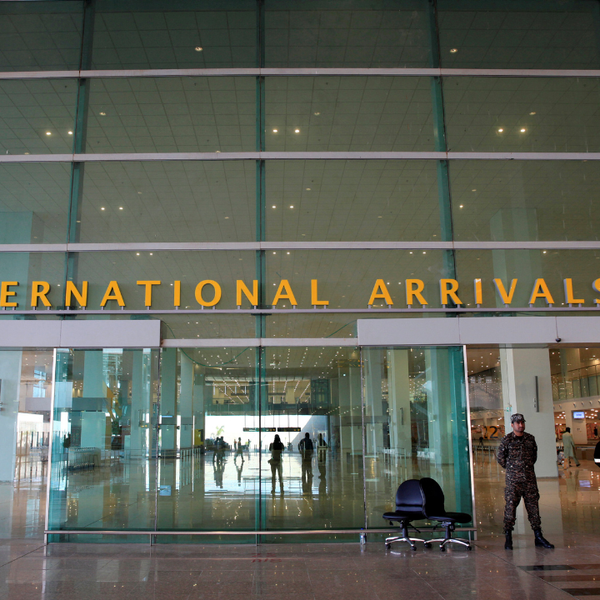Sindh CM inspects Guddu Barrage as high floodwaters test Pakistan’s defenses
Murad Ali Shah says lives and property will be protected 'at all costs' as Guddu Barrage faces high floods
News Desk
The News Desk provides timely and factual coverage of national and international events, with an emphasis on accuracy and clarity.

Shah was briefed by Irrigation Minister Jam Khan Shoro, Irrigation Secretary Zarif Khero and engineers during his visit to Guddu Barrage on September 14, 2025.
Screengrab
Chief Minister of Pakistan's southern province of Sindh, Syed Murad Ali Shah, visited the Guddu Barrage on Sunday to assess flood defenses as water levels surged to a high flood stage on the Indus River.
Shah was briefed by Irrigation Minister Jam Khan Shoro, Irrigation Secretary Zarif Khero and engineers on the ground. He said the barrage, one of the country’s largest irrigation structures, was designed to handle 1.1 million cusecs (cubic feet per second) of water. At present, 627,908 cusecs were flowing through — enough to strain embankments and trigger emergency measures.
Officials identified the Tori and KK embankments as weak points in the system. At the 18th mile of the KK Bund, flood-fighting work was already underway to prevent breaches. Shah said measures were being taken in Kashmore and Shikarpur districts to ensure safe passage of floodwaters downstream.
According to advisories from the National Disaster Management Authority, the Guddu region was prepared to safely pass what officials described as a “super flood.” Heavy machinery, boats and flood-fighting supplies had been deployed along the Indus River embankments, and emergency teams were reinforcing vulnerable spots.
Critical irrigation hub
Built in the 1960s, Guddu Barrage diverts water from the Indus into four major canals — the Reni Canal, Ghotki Feeder, Begari Sindh Feeder and Desert Pat Feeder. Together, they irrigate vast stretches of farmland in Sindh province, home to millions of farmers.
Any damage to the barrage or its protective embankments could inundate nearby towns and disrupt agriculture in one of Pakistan’s most fertile regions.
Shah was also updated on ongoing rehabilitation under the Sindh Barrages Improvement Project, which is supported by the World Bank. The project includes replacing gates and gearing systems at the barrage, upgrading canals and restoring protective “river training works” such as spurs, studs and guide banks that redirect the flow of water.
The barrage has 65 main gates and 25 canal gates. Officials reported that 30 of the main gates had already been replaced, while all 25 canal gates had been fully changed. Embankment structures had been raised by 6 to 10 feet in recent years to withstand higher water levels.
Precautionary measures
During the briefing, Shah was shown maps marking protective structures around the barrage, including right and left marginal bunds, the RM bund and the DP feeder bund. Guide banks and spurs — structures that jut into the river to reduce water pressure — were also highlighted. Sensitive and weak points had already been identified for monitoring.
The chief minister directed authorities to further tighten surveillance of vulnerable areas. He ordered flood-fighting staff to remain stationed around the clock and instructed district administrations to accelerate relief work in coordination with local communities. Any emergencies, he said, must be immediately reported to the provincial control room.
“The protection of people’s lives and property will be ensured at all costs,” Shah told reporters after the visit. “I assure the people that we will not leave you alone in this difficult time.”
Call for resilience
Shah praised the resilience of Sindh’s farmers and laborers, who he said continued to work despite repeated natural disasters. “Sindh’s people are strong, and together we will overcome this flood challenge,” he said. “Wherever the water pressure is increasing, the government of Sindh is standing with you.”
He added: “There is a flood, but my courage and your trust are even greater. This is the time to stand with you, and I am standing among you.”
Pakistan is no stranger to destructive floods. In 2022, record monsoon rains and glacial melt submerged a third of the country, killing more than 1,700 people and displacing millions.
Experts warn that climate change is increasing the risk of extreme flooding along the Indus River, which flows through the length of the country.







Comments
See what people are discussing